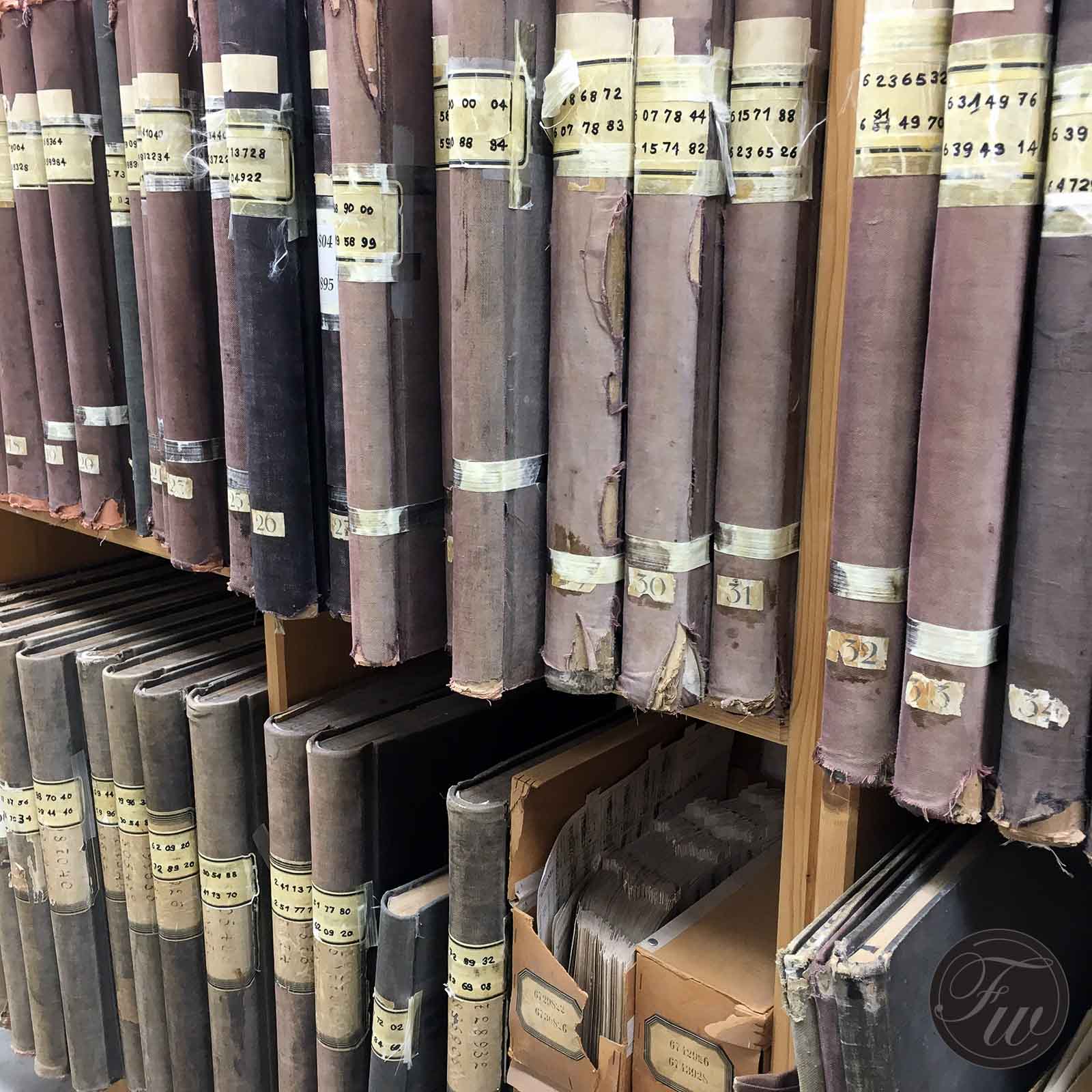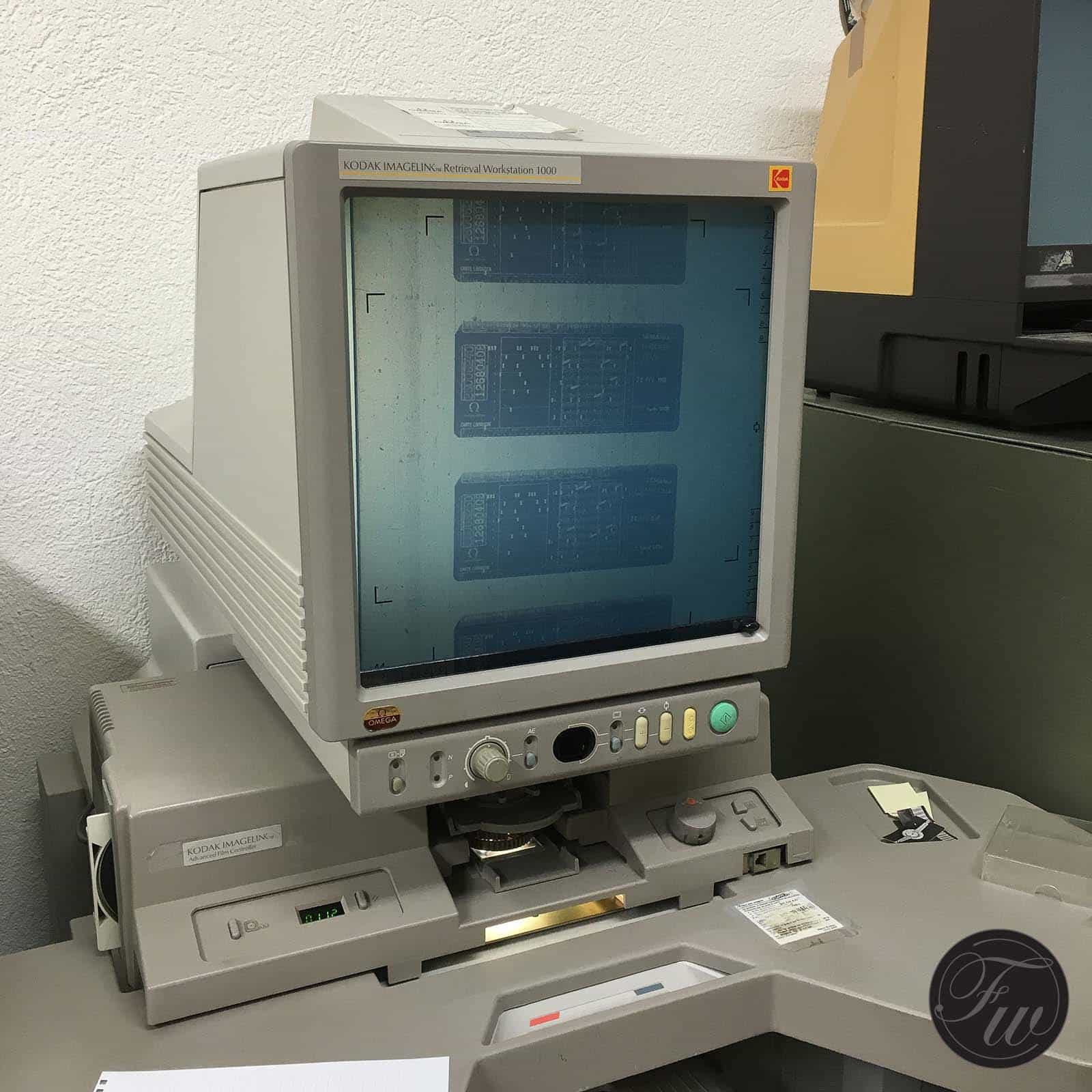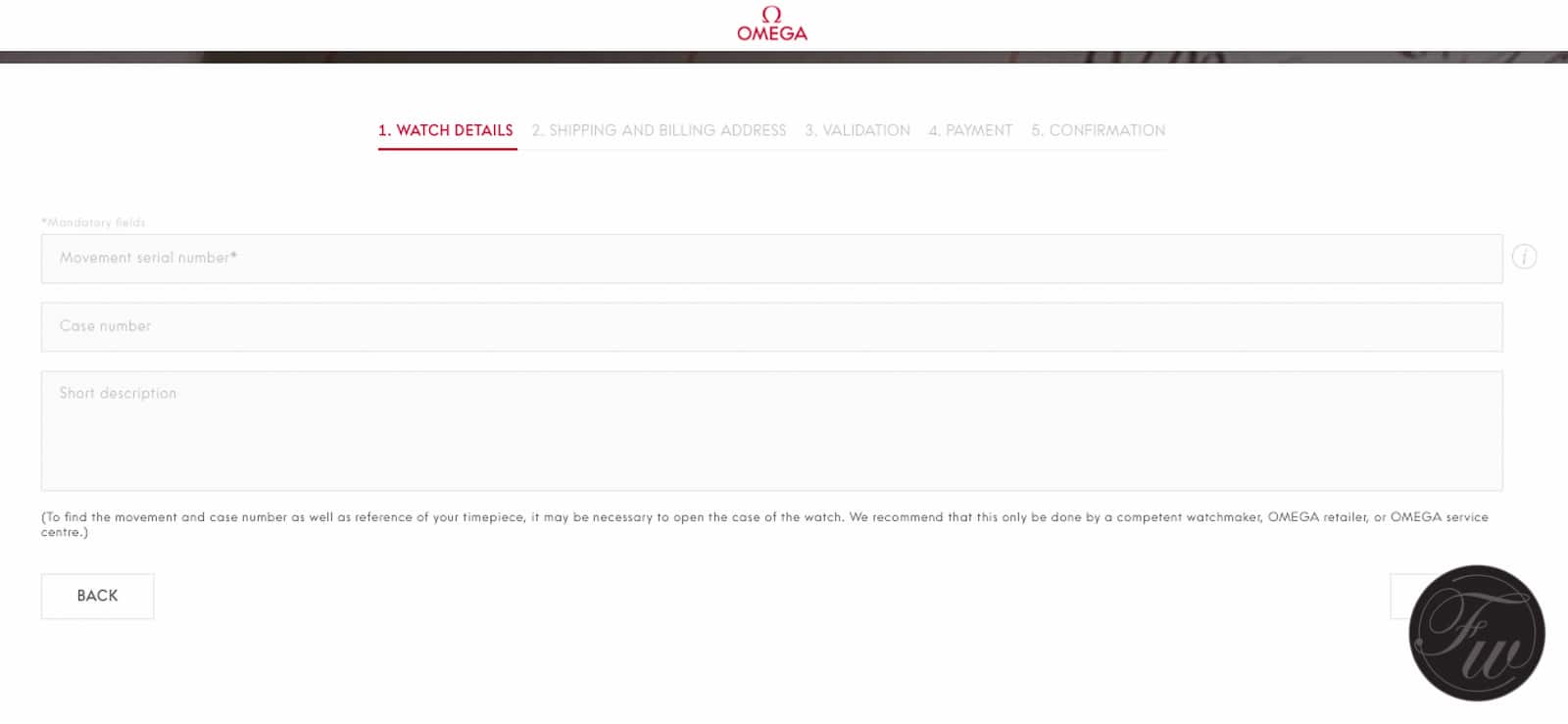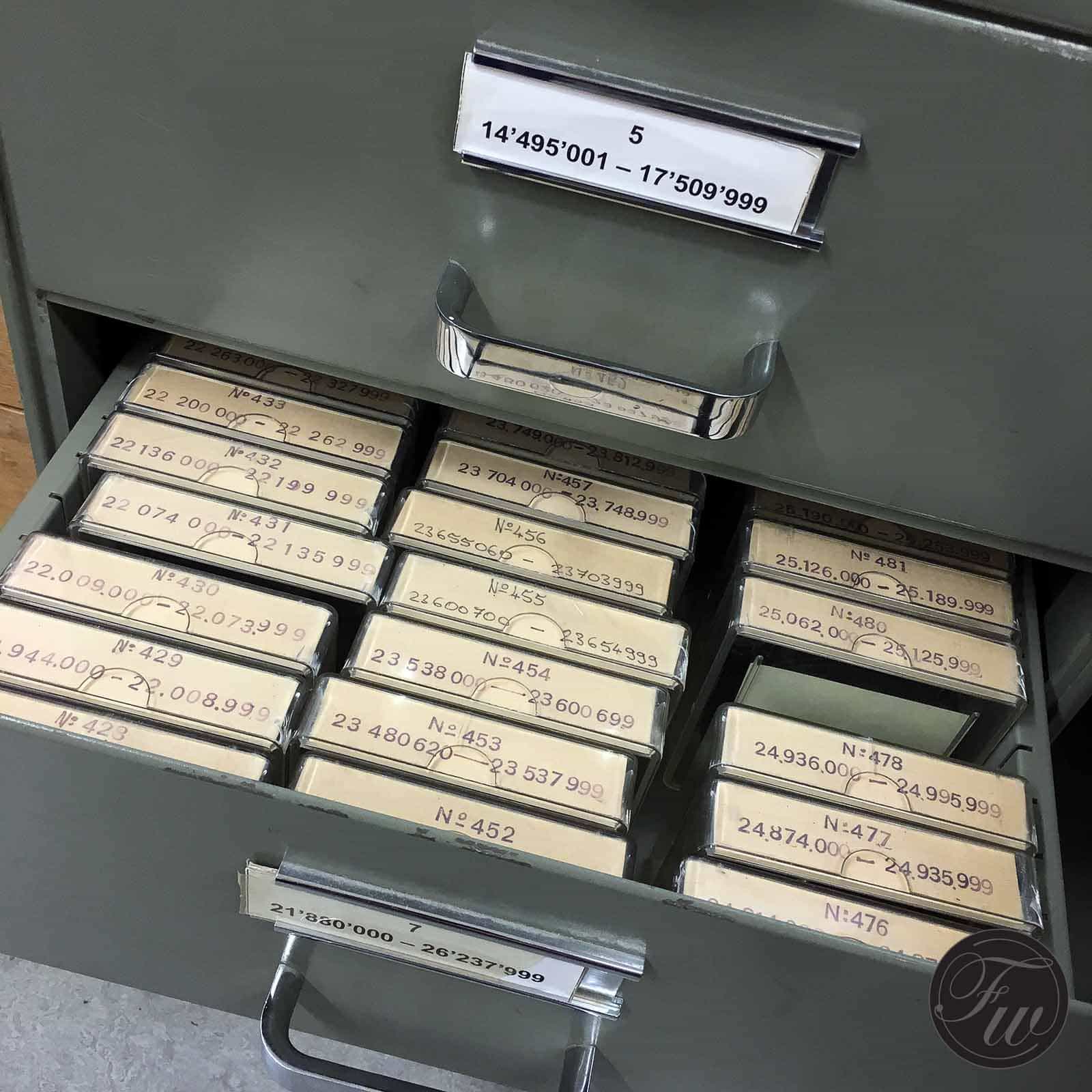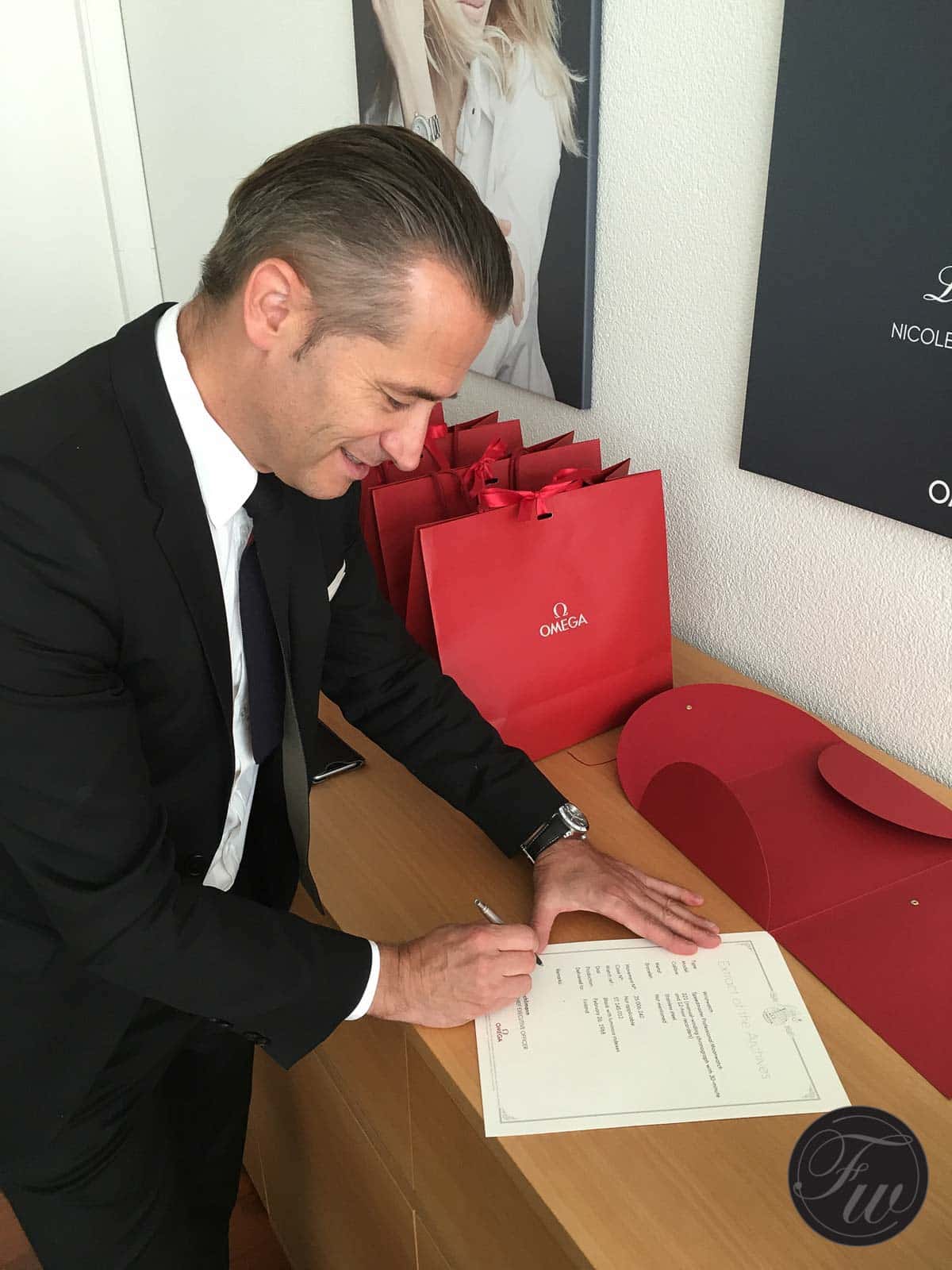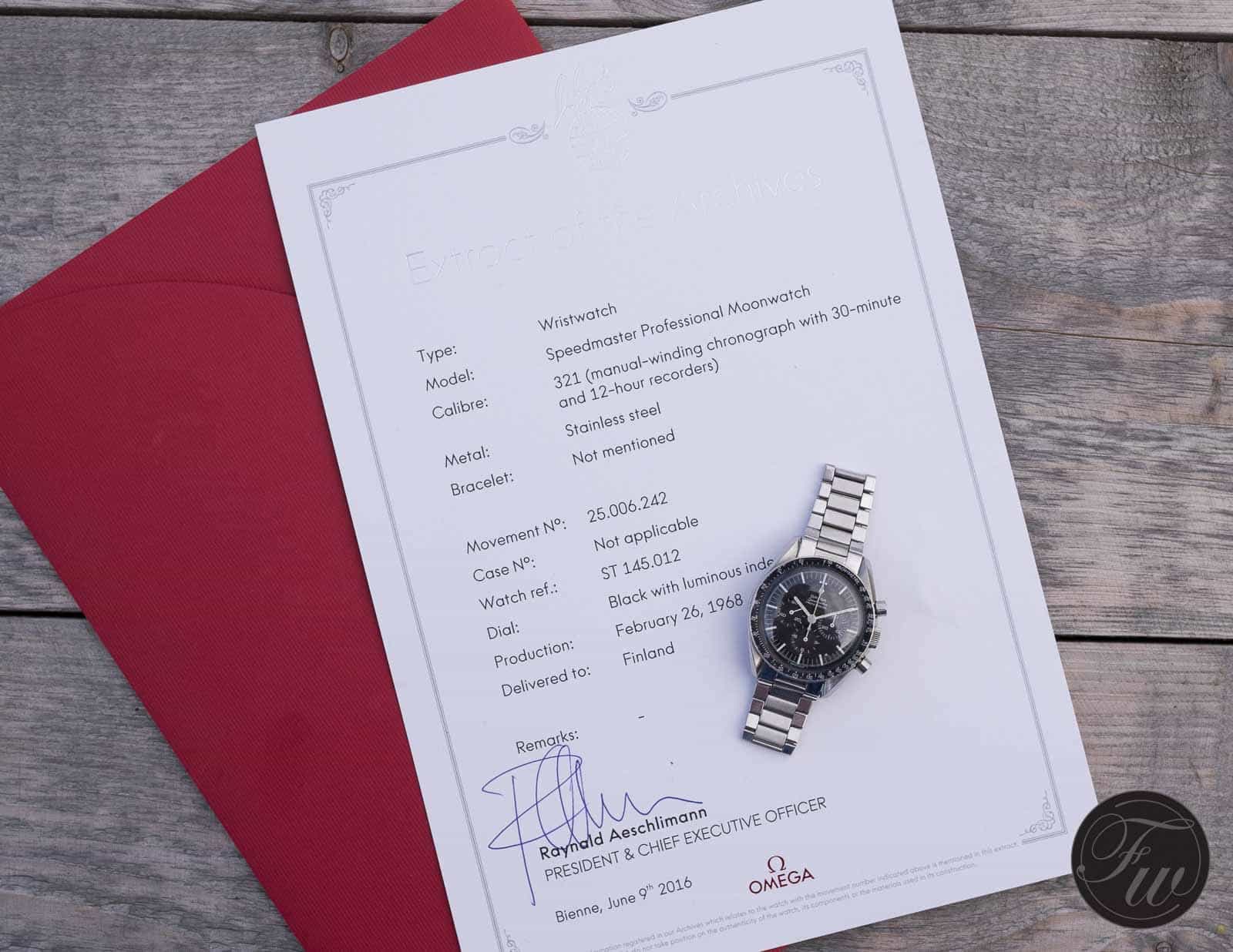Omega’s Extract Of The Archives – How It Works
Why you want an Extract of the Archives
When I bought my first vintage Omega Speedmaster, I wanted to know more about this specific watch. Information on the Speedmaster I could find on-line or in magazines, but I was curious to learn about the history of my own Speedmaster. For this, Omega – and a number of other brands – are able to provide you with an extract from the archives.
Omega’s Museum And Archives
I ordered quite a few of these Omega Extract of the Archives documents over the years as I feel they do add value to the (vintage) watch. It also gives you a production and shipping date, as well as the country it was originally shipped to. But what exactly are these archives, and why is Omega charging you 120 Swiss Francs for it?
Just recently, I visited the Omega Museum in Bienne and spoke to the museum curator Petros Protopapas and his team. They are not only responsible for the museum, its watches and world wide travels to exhibitions and events, but also for the archives.
In the last few years, I have visited the Omega Museum a couple of times. Sometimes for a press event, but also on my own. About a month ago, I was invited to have a look in their archives as well.
What does it look like?
I proposed to do a little test case, on my own Speedmaster watch. I already knew it was shipped to Finland on October 22nd 1968, but that was about it. This information was printed on one of the old Extract of the Archives I had from years ago. I handed over my Speedmaster Professional 145.012 to one of Omega’s watch makers in Bienne, to write down the serial number. In the meanwhile, I was shown around in the archives.
The archive is a large room and looks like a library. There are countless books on shelves, perfectly organized. Not only written books, but many books with hand written notes. More later. Near the entry of this room, was a machine to read microfilm (microfiches). A Kodak Imagelink workstation, that looks very familiar to the machines that I used to find in our local library when I was a kid. You could read old newspapers on those, if my memory serves me correctly.
You will already get an idea why Omega is charging a fee for this. There is nothing digital about these archives and every single request is being done manually. So, let’s have a look at our test case.
Serial Number
The starting point for Omega’ Extract of the Archive is the serial number of your watch. The serial number can be found on the movement of your watch. With the modern watches, the serial number is also engraved on the caseback. Of course, you will also find the serial number on the warranty card that came with your watch. For vintage watches however, it isn’t always evident that the original papers are still there. My Speedmaster has a couple of numbers on there.
Where to look
On the inside of the caseback there is 145.012-67. This is the reference number of the watch. Some vintage watches also have a separate case number, but only very old watches use this. Then, on the movement, we find two more numbers. A short number, ‘321’ in this case, referring to the caliber number of the movement. Another number, much longer, is the serial number. In my case, the serial number is 25,006,242. Now, according to some sources on the internet, like Roman Hartmann’s table, this number dates the watch to 1967. However, is this correct?
Normally, you enter this via the web form on the Omega website, as below. You enter all details, your address and so on. So the next steps are ‘behind the scene’ and show you what needs to be done to get you your extract of the archives.
Going Into The Archives
With this serial number, we go into the archives. Based on the number, the guys from Omega know that the information is on microfilm. The Kodak machine I mentioned earlier, is the workplace we need to spend some time. First, the correct cassette or film needs to be picked from the archives. Big steel drawers that have dozens of these cassettes. They are all organized by sequence, so it is quickly found.
Microfilm
On the screen of the Kodak Imagewriter, as the thing is called, we have to search for the right serial number. It needs some practice, as we can’t just enter a keyword. We need to ‘scroll’ through the microfilm until we see the correct serial number. You have to know that these serial numbers refer to the movement (also called movement number, not to confuse with caliber number) and are ordered or sorted per 10. We need to find 25,006,240 as my serial number is 25,006,242. The next batch would therefore start with 25,006,250.
Here it is. As you can see, it carries a lot of information that is ‘coded’ in an old fashioned way. But it also has some interesting other information that is easily readable. On the left, you see (horizontal) 25,006,240. Below, you see 12680408. That is an interesting number as well, more later. On the top row, you can see the movement caliber number (321) and to the right, it carries the reference number (145.012).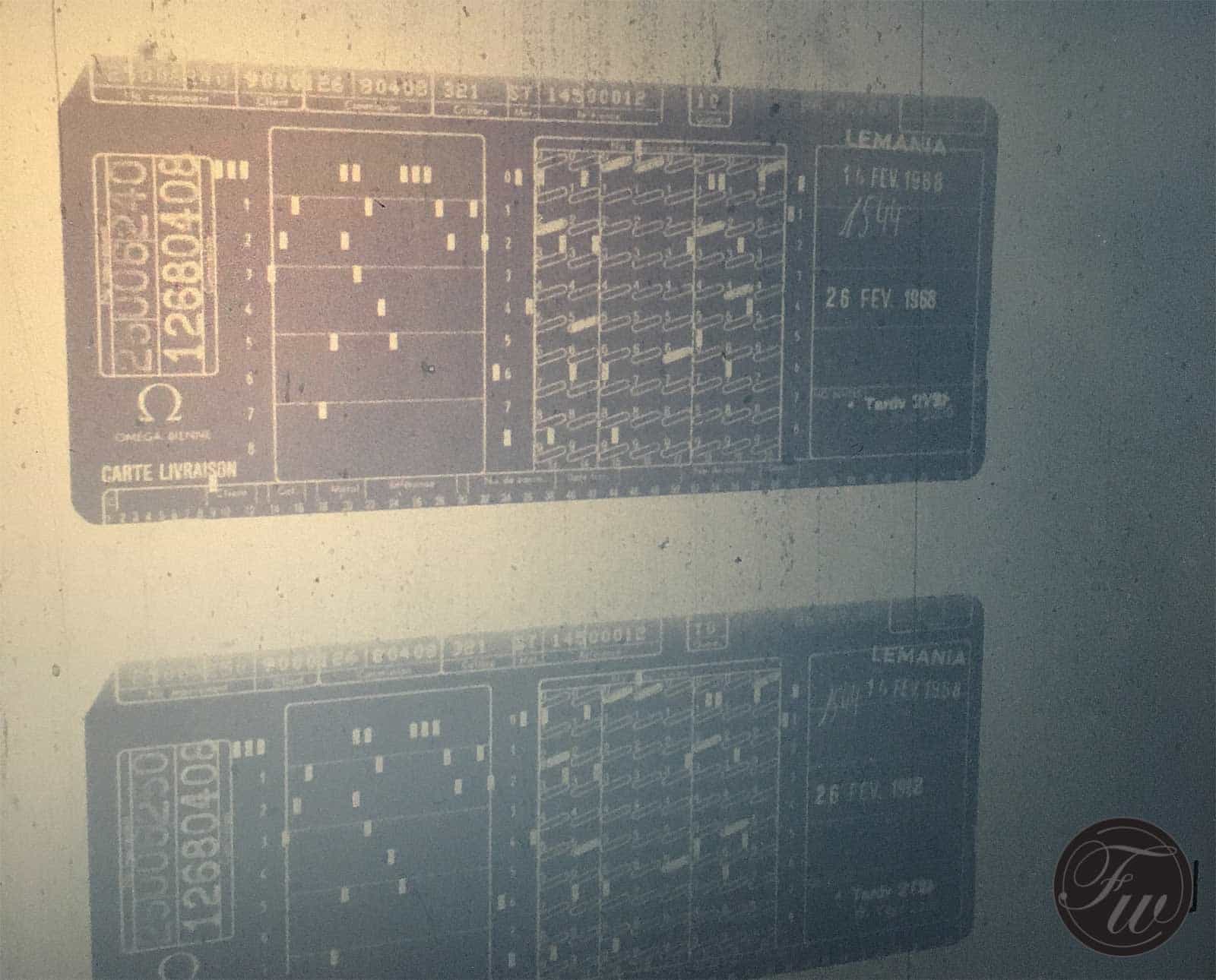
On the right you see a column with some dates. Below ‘Lemania’, you see 14 Fev. 1968 and 26 Fev. 1968 for example. Fev stands for February. See below for a close-up. On the 14th of February, the Lemania based caliber 321 movement was delivered to Omega. On the 26th of February, the watch was assembled. Bingo, now we have the production date and year of the watch. This is the date that will be mentioned on the Extract of the Archive.
However, if such a date is not available, Omega will use the shipping date instead (and print that on the Extract of the Archives under “Shipping date”). In this case, I was lucky, and Omega had the actual production details.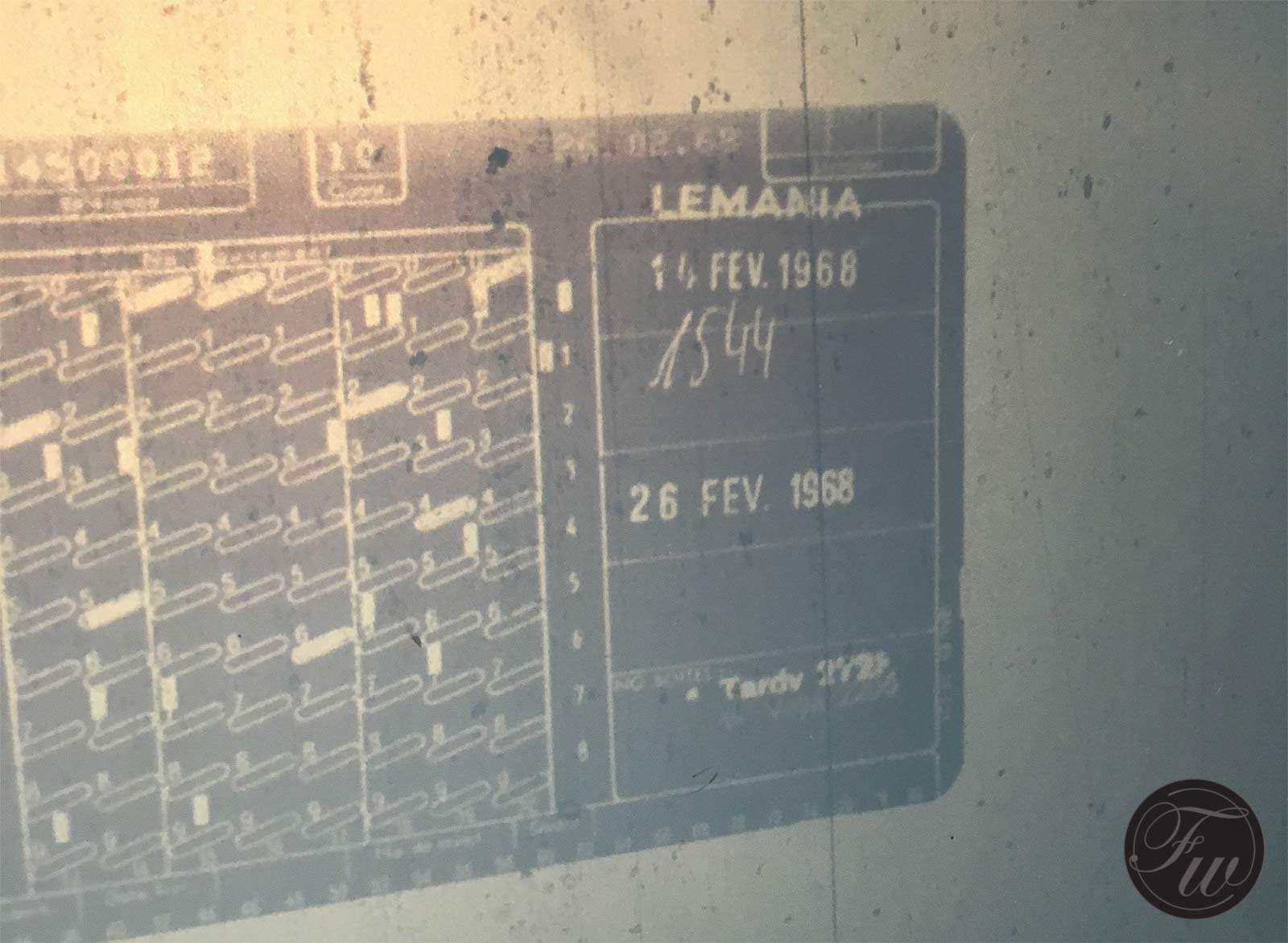
Extra Information
But wait, there is more. I was extra lucky, as the microfiche also showed another number. It showed “12680408” right below the serial number range. This number refers to the dial of the watch.
We need to search for another cassette where we can find this number. After a few minutes, we found it and insert it into the Kodak machine. Look at the microfilm below, it shows two dates. The date on the left is the date of ordering the dials. On December 13th of 1966, Omega ordered 500 Speedmaster Professional dials. On the right (also in red), you see the delivery date. One year later. Today, it wouldn’t take a year to receive an order of dials of course.
Anyway, this is extra information that is not being used for the Extract of the Archives. Also, it takes so much more time, that it would make the entire process very costly.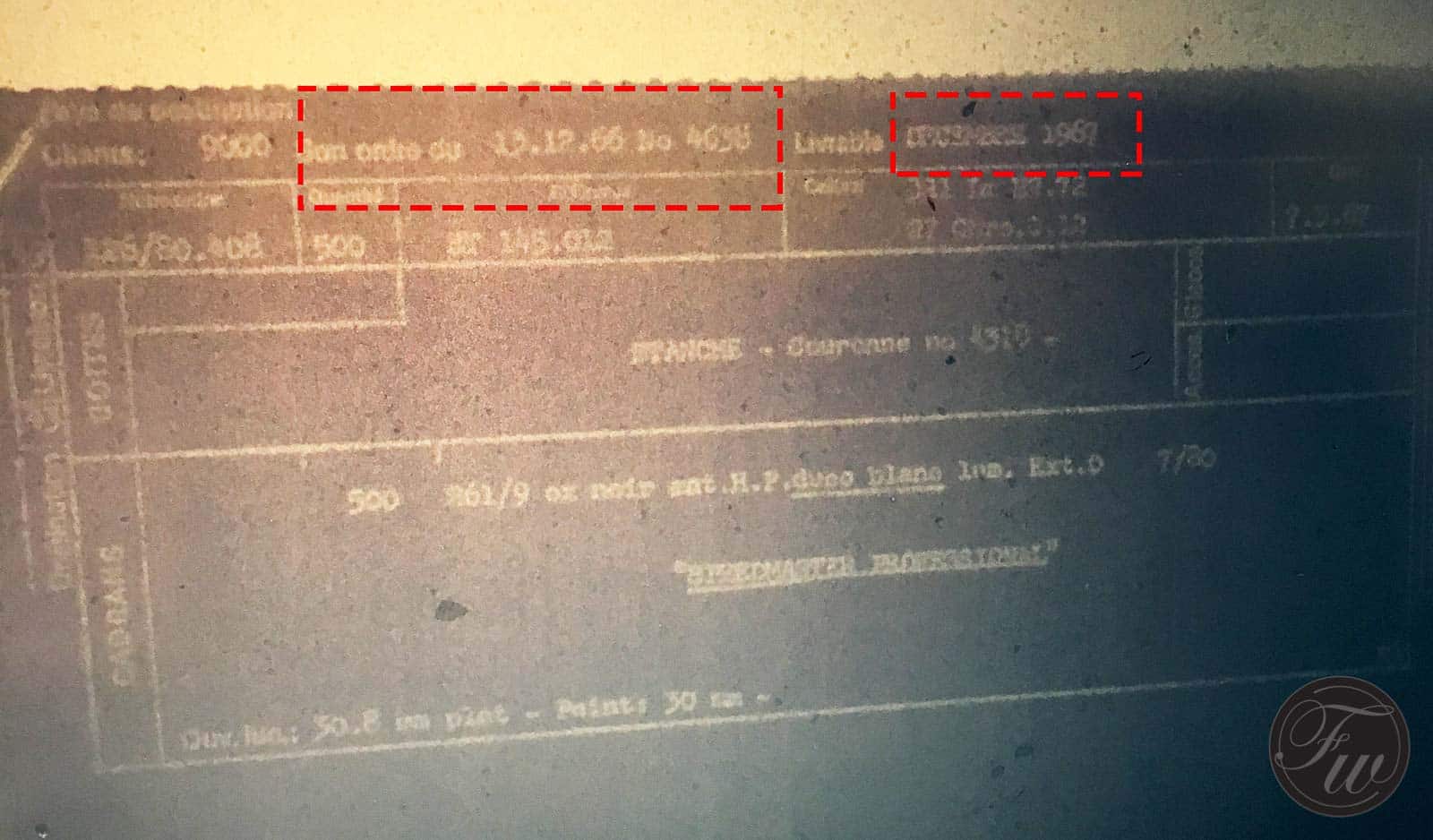
Books in the Archives
So I am very lucky, I have the production date of the watch. February 26th in 1968. But as I said before, I already knew that my watch was shipped on October 22nd in 1968. I received that information back in 2000, when I was in touch with one of the people who was working in the museum.
Let’s find out whether this was correct. We walk towards the other end of the department. Here, we find books that are sorted on numbers as well. We find the correct book and have to look up the serial number range again. As you can see, it is like a manual administration book. The batch of 25,006,240 is there again, and on the right we see 22.10.68 as well as ‘1191’. Both hand-written. Now we now the shipping date, which indeed was October 22nd 1968. But also a number that refers to the destination.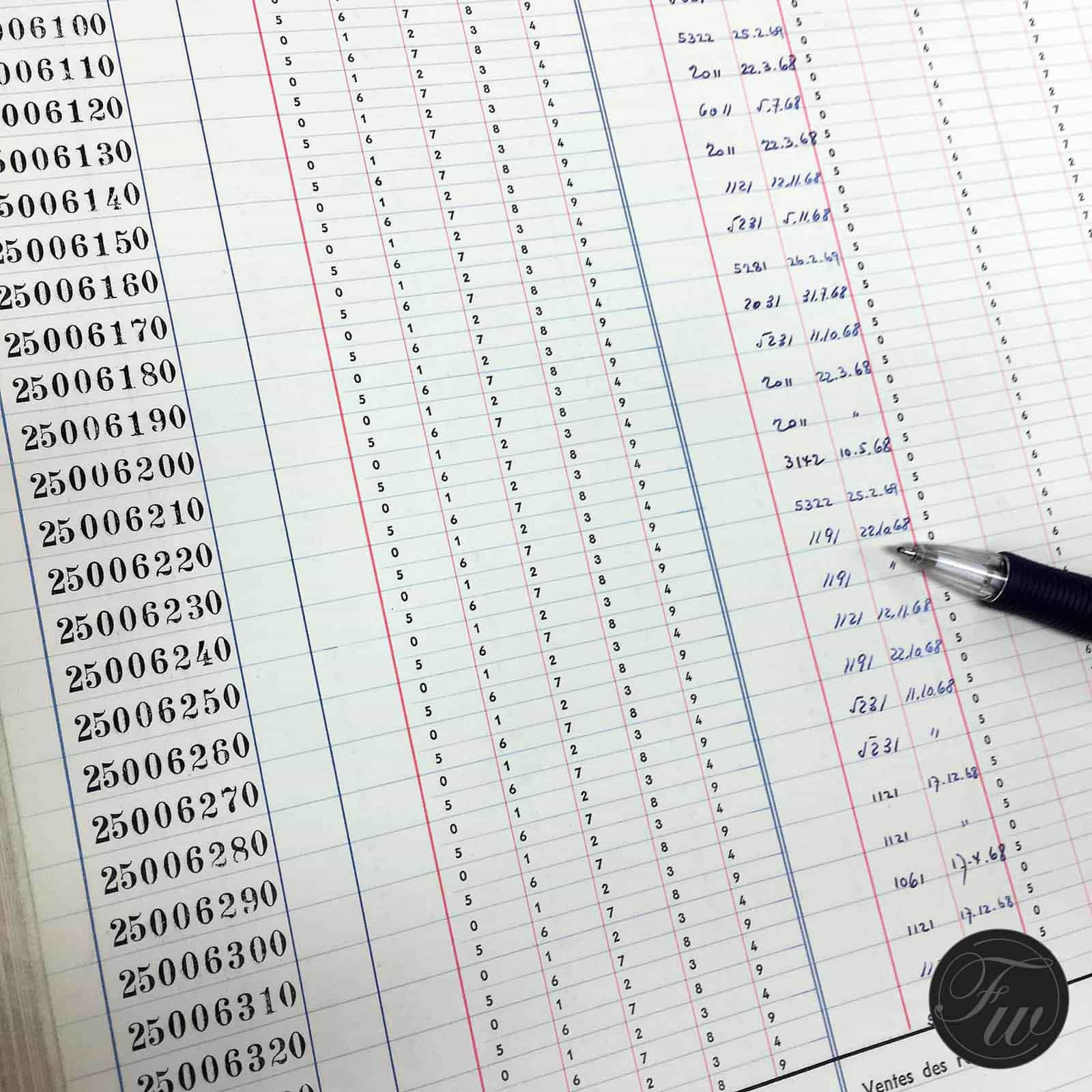
Country of Destination
The 1191 is a number that can be looked up digitally. It refers to the country of destination and, in some cases, to a distributor that Omega used in the past. 1191 refers to, in my case, Finland. This country of destination is also printed on the Extract of the Archives.
Omega Extract of the Archives – Printing and Signing
One of the last steps in this process is creating the actual Extract of the Archives document and having it signed. Signed by the president of the company, that is.
The Extract of the Archives document is being created by one of the employees of the Omega Museum, in our case the same guy who did the look-up of all information. The Extract of the Archives needs some variables, like the type of watch, exact model name, caliber number and so on. These can be filled in by using a drop down list with all sorts of options. The movement number (25,006,242 in my case), watch reference (ST145.012), production date (February 26 1968) and country of destination (Finland) is filled in manually.
The document also leaves some room for additional notes or remarks. Let’s say if your watch was originally delivered to NASA or to the Peruvian Airforce, this will be written down there.
Once ready and checked, the document is being printed on thick grainy paper with silver lettering for ‘Extract of the Archives’ and a beautiful lay-out. Now, all it needs is a signature by the President & CEO of Omega.
Signing by Raynald Aeschlimann
All these Omega Extract of the Archives are being signed by the president. I used to think that they used a stamp, or pre-signed documents for this. But no, every single Extract of the Archives is being signed by Raynald Aeschlimann, CEO of Omega since June 1st. Since it was June 9th and I was told that there were a number of new Extract of the Archives waiting for him to be signed, I thought to play it clever and take the unsigned Extract of the Archive with me and have it signed by him on the next day, during a press conference (Planet Ocean Deep Black introduction). Therefor, I think I might have been the first one to receive an Extract of the Archives signed by Mr. Aeschlimann. My apologies for jumping the queue there.
As you can see above, Mr Aeschlimann is signing the Extract of the Archives of my vintage Speedmaster. My first Speedmaster watch, that I bought in 1999 to be precise. It just got a bit more valuable for me with this step.
The Extract of the Archives comes in a red binder,embossed with ‘Omega Musee’, a business card of the Omega Museum & Archives and is sealed with lacquer.
Order Your Extract of the Archive
Now you have seen how it works and time consuming this process is, you understand why Omega is charging a fee for this service. In my opinion, it does add value to your watch but also gives you a good understanding of the production date (and if not available, a shipping date) and where it was sent to. Omega simplified the request process with their web application and does not need your watch to be there in Bienne, unlike some other brands require (and charge more).
You can order your extract via this link.
Some Thoughts on Production Date
The microfilm made me aware of the fact that there is a difference between production date(s) of part(s) and the assembly date. Perhaps it would be more correct to use ‘Assembly Date’ instead of production date, but in the end, it is about the entire watch. The assembly of the watch can be seen as the ‘production’ of the entire watch of course. The fact that my watch uses parts that were ordered in 1966 as well as parts (movement) that were probably produced and delivered in 1968, make the ‘production date’ of the watch an interesting concept. One thing is for sure, the lists with production dates that float on the internet give a good estimation, but if you really want to be certain, you will need to request an extract of the archives.

